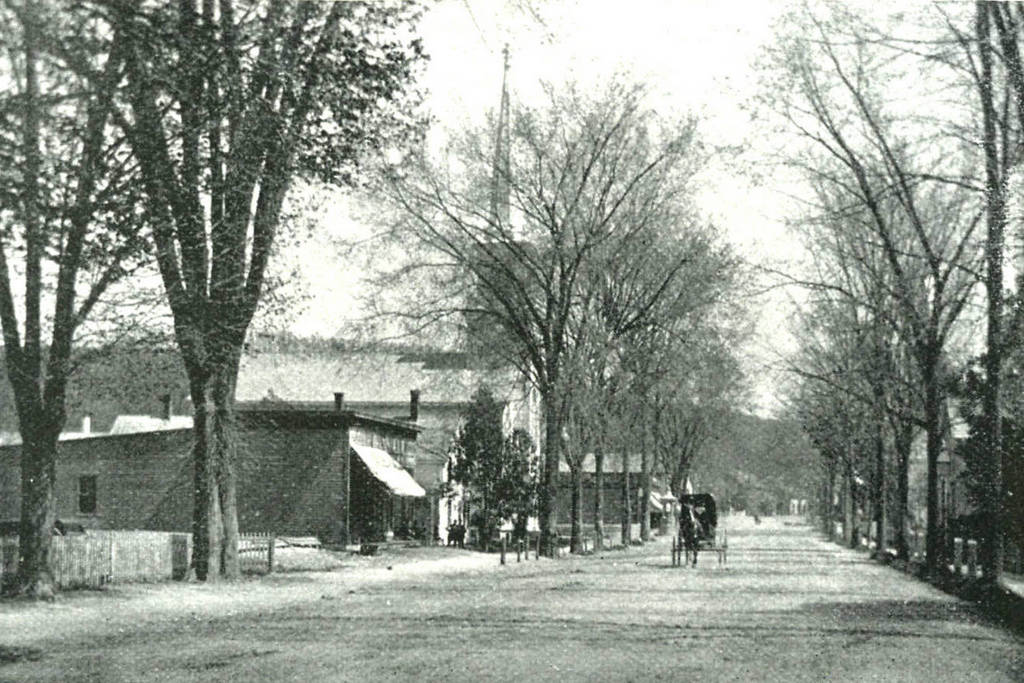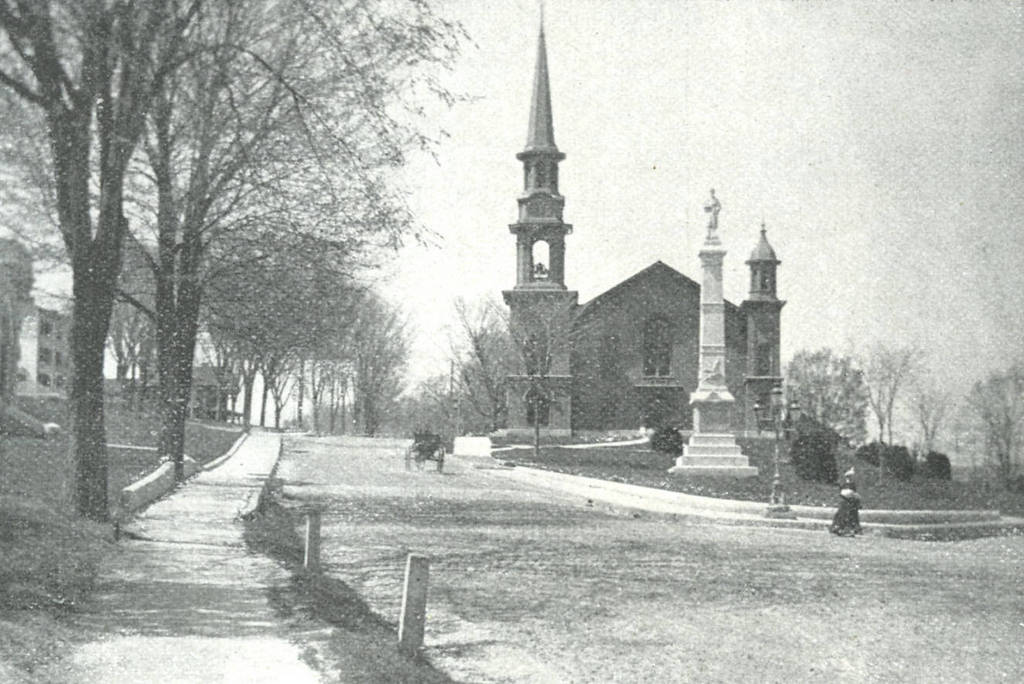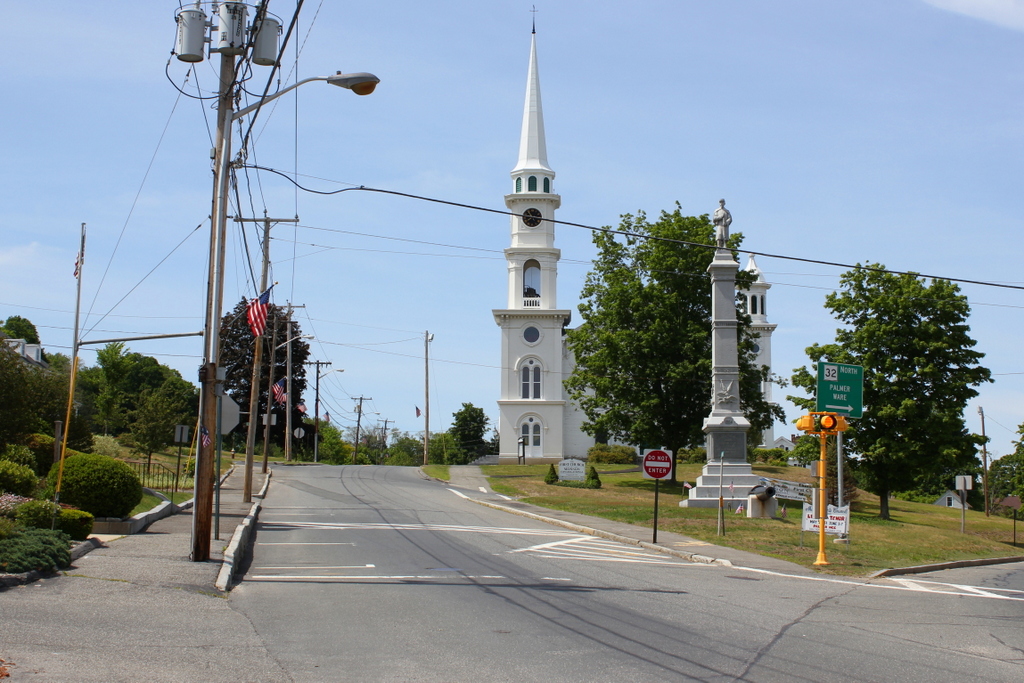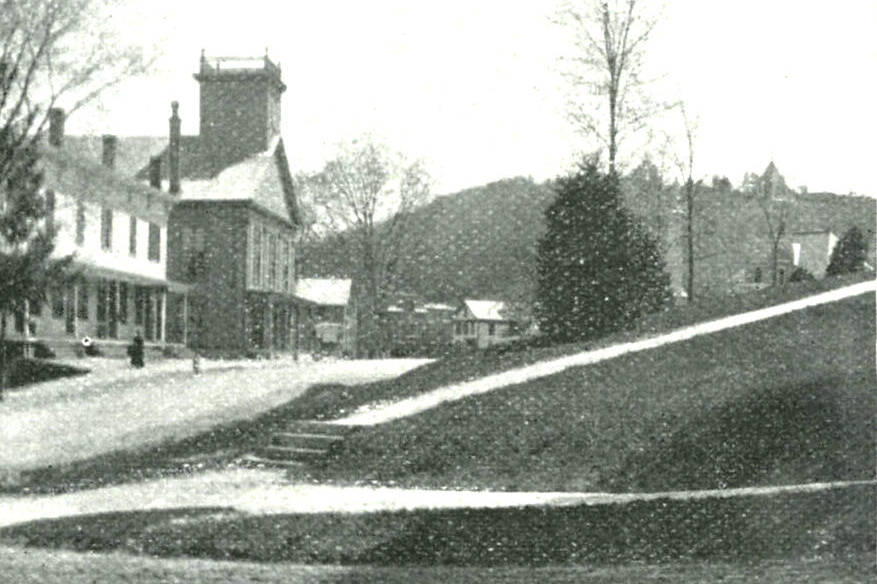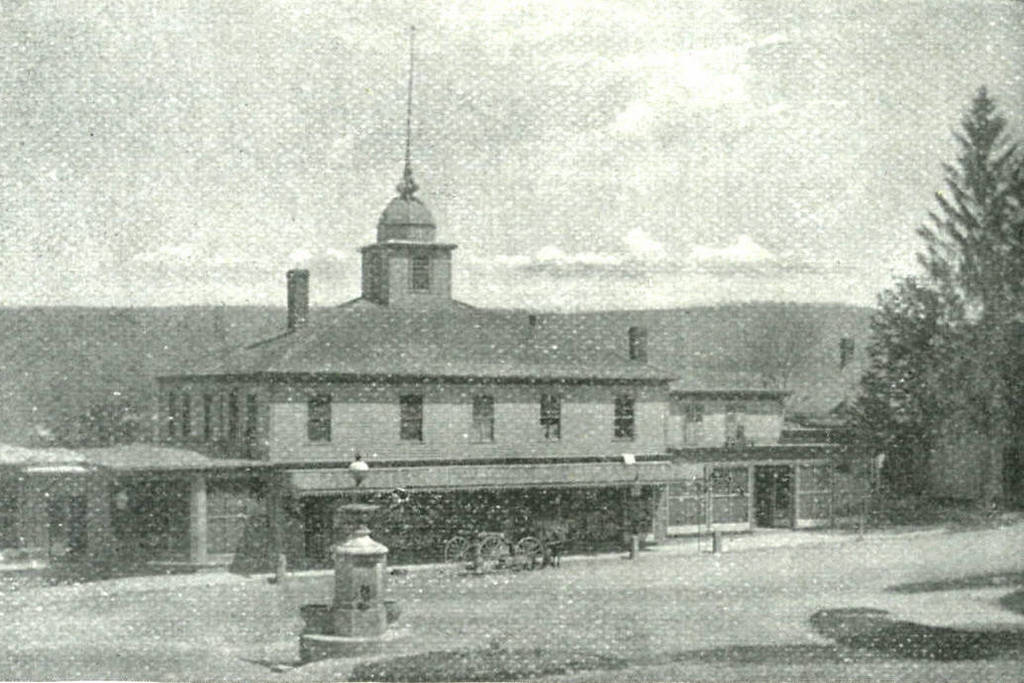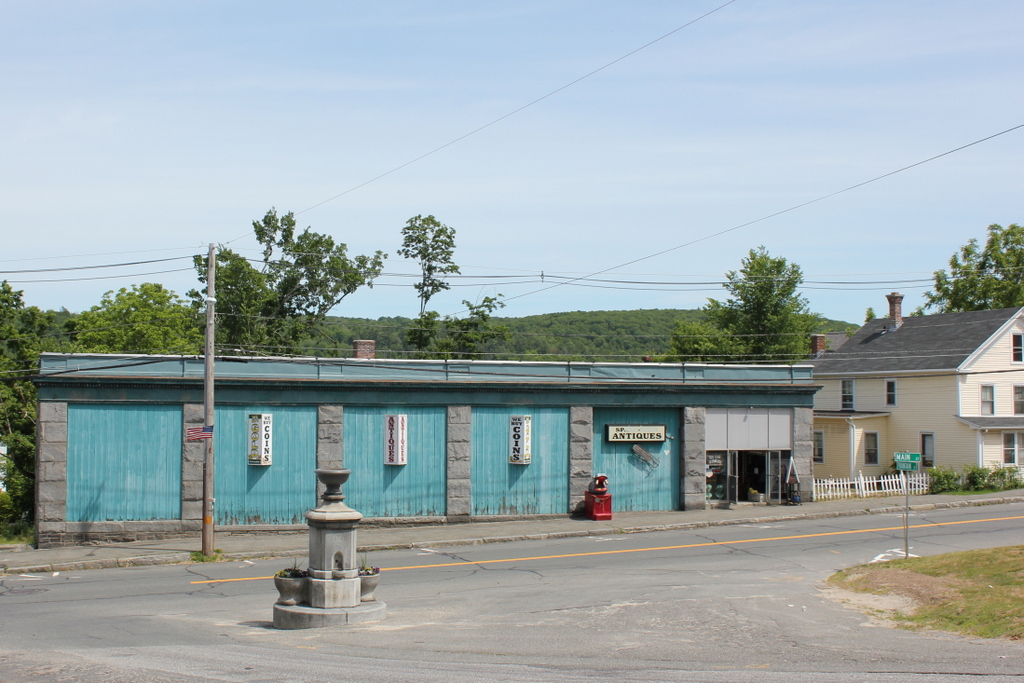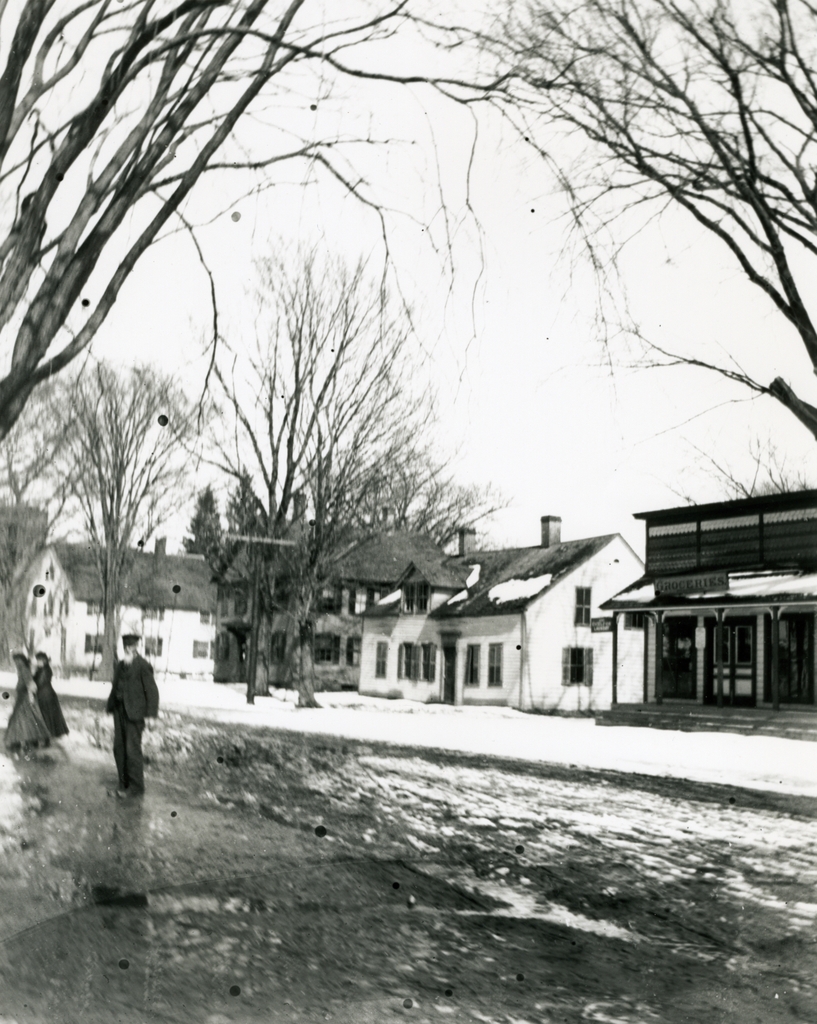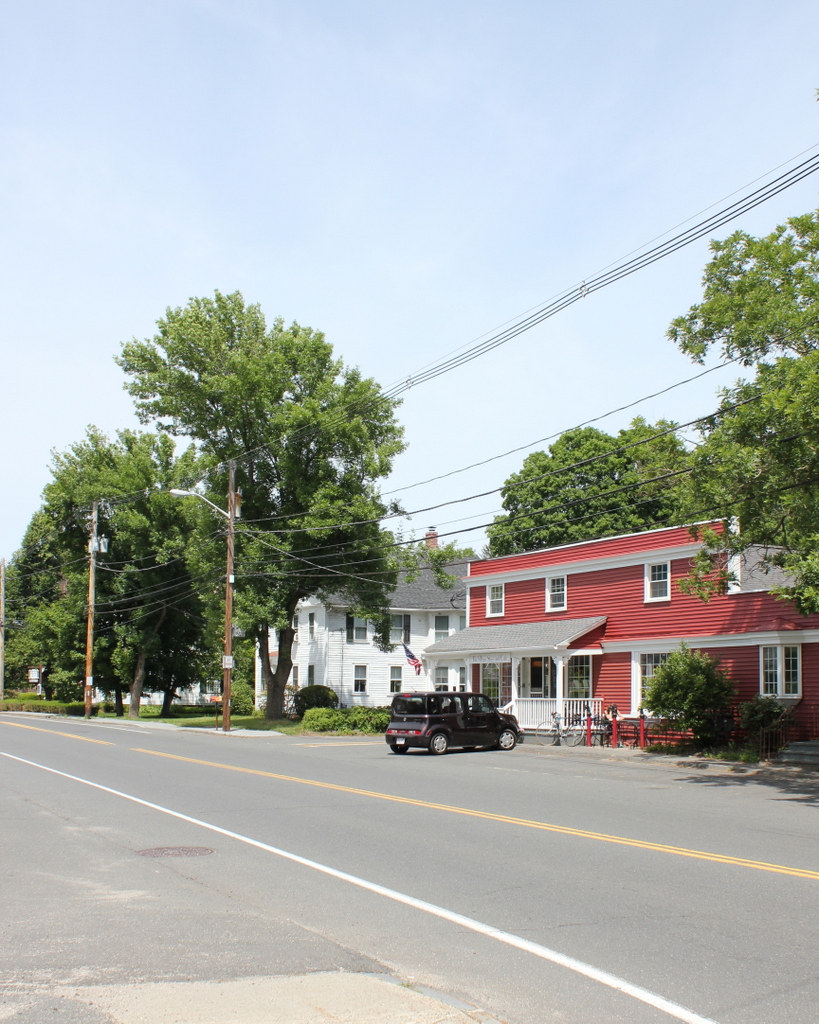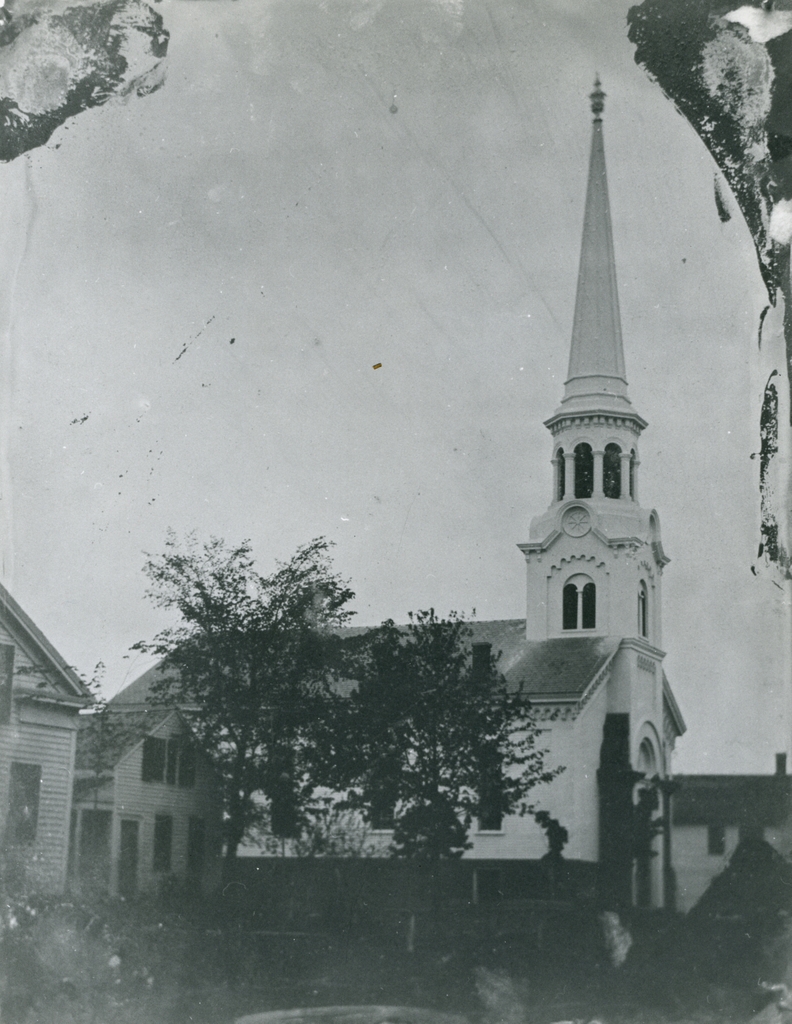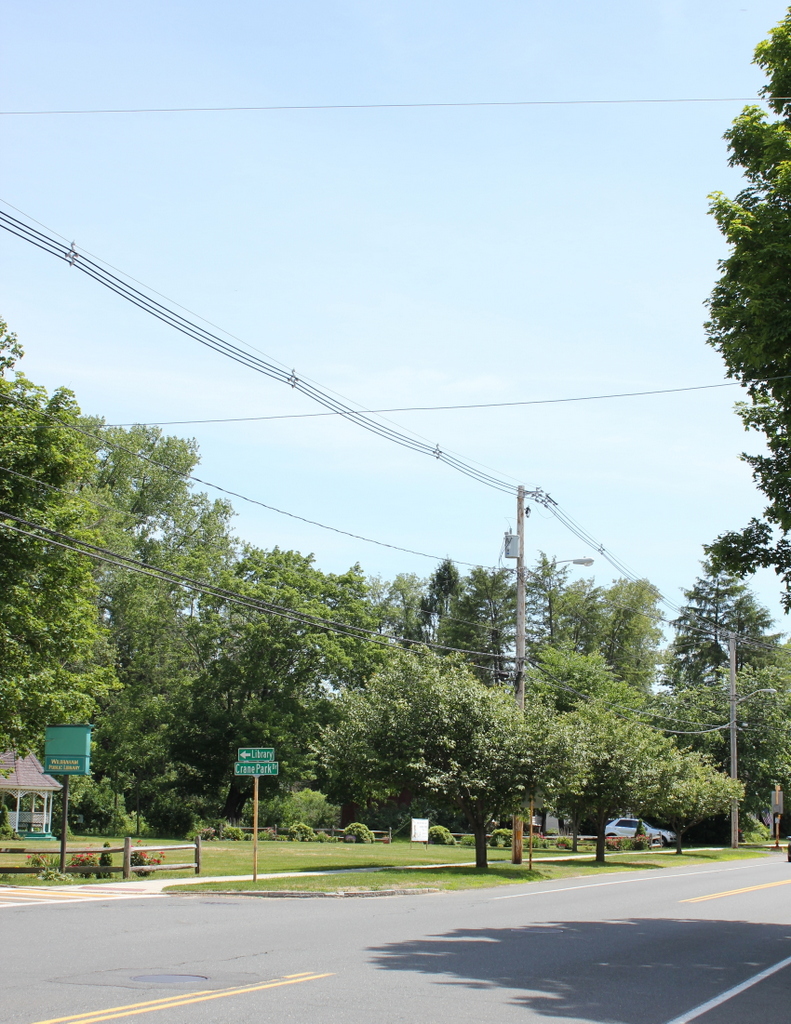Looking south on Main Street in Monson, toward the Methodist Church at the corner of Main and Cushman, around 1892. Image from Picturesque Hampden (1892).
Main Street in 2015:
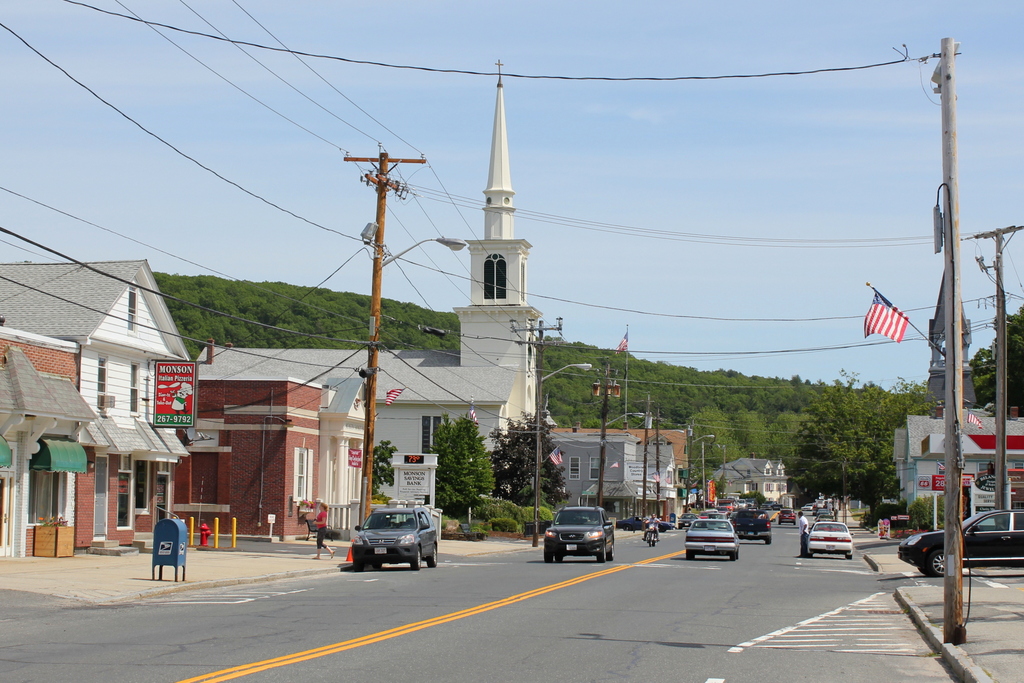
In many ways, Monson’s town center of the 1890s was like many other New England towns of the time: a Main Street lined with elm trees and hitching posts, small stores, and a white church with a tall steeple. Today, Monson still has many elements of a typical small New England town, but not much has survived from the 1890s scene. Many of the stately elm trees were destroyed in the 1938 hurricane, and most of those that survived ended up succumbing to Dutch Elm Disease. The hitching posts have been replaced by parallel parking spaces, and most of the buildings have been replaced with newer, larger commercial developments. However, at least one building survives from the first scene: the United Methodist Church. Built in 1850, it is the oldest of the four active church buildings in town (the original Methodist church building is older, but it is now a private residence), but in the past 120+ years it has lost and regained its steeple. It was damaged in the 1938 hurricane and taken down in 1952, and was not replaced until 2010.

